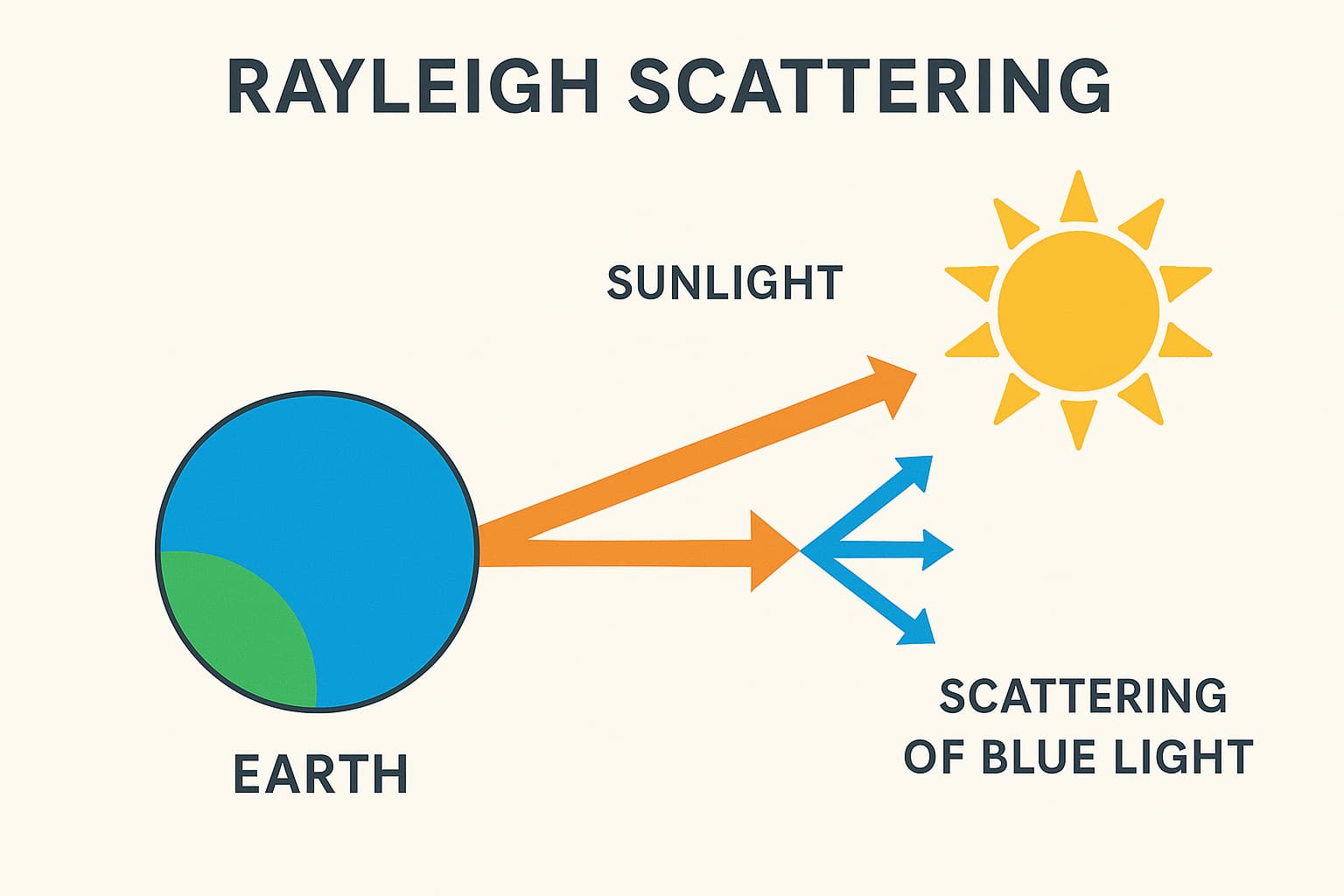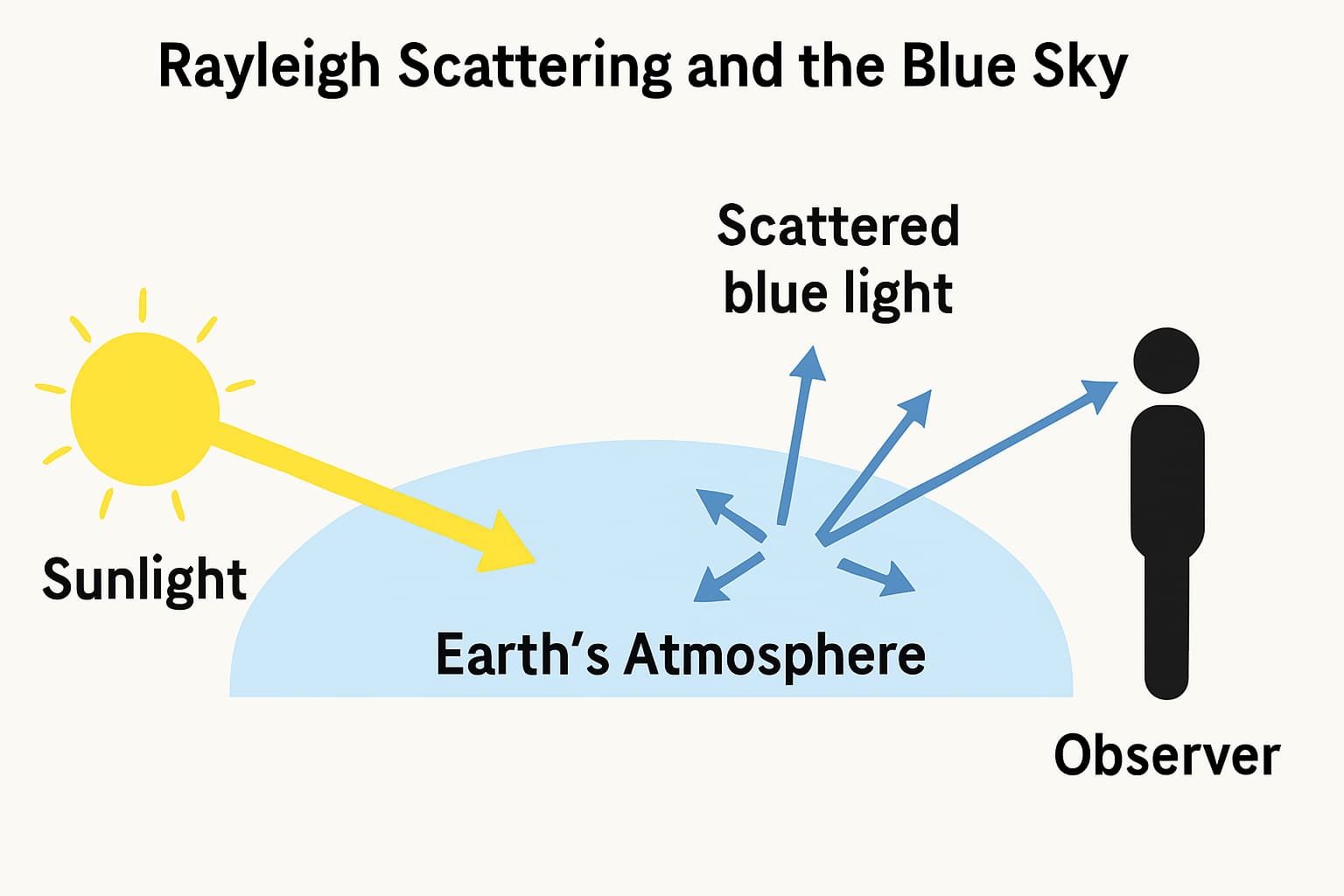Why is the Sky Blue? The Science Behind It
Why is the Sky Blue? The Science Behind It
Introduction
Have you ever wondered why the sky is blue? It's a question that fascinates both children and adults alike. While the sky changes color throughout the day, appearing orange or red during sunrise and sunset, its most common daytime shade is blue. The reason for this lies in the way light interacts with Earth's atmosphere. In this article, we will explore the science behind this phenomenon, explain why the sky isn't violet, and discuss why it changes color at different times of the day. By the end of this read, you’ll have a clearer understanding of this everyday marvel.
The Nature of Light and the Atmosphere
To understand why the sky appears blue, we first need to understand light. The sunlight that reaches Earth looks white, but it is actually made up of multiple colors. A simple experiment using a glass prism can demonstrate this—when light passes through the prism, it splits into different colors: red, orange, yellow, green, blue, indigo, and violet. These colors form the visible spectrum of light.
When sunlight enters Earth's atmosphere, it encounters gases like nitrogen and oxygen, along with tiny particles such as dust and water droplets. These elements interact with light and cause it to scatter in different directions. The way light scatters plays a crucial role in determining the sky’s color.
Rayleigh Scattering: The Reason for the Blue Sky
The primary reason the sky is blue is due to a phenomenon called Rayleigh scattering, named after the British scientist Lord Rayleigh. This process occurs when light waves interact with particles that are much smaller than their wavelength. Light with shorter wavelengths, such as blue and violet, scatters much more than light with longer wavelengths, like red and yellow.
Since blue light has a shorter wavelength than red light, it gets scattered in all directions by air molecules in the atmosphere. As a result, we see blue light coming from all parts of the sky, making it appear blue.
Why Doesn’t the Sky Look Violet?
Since violet light has an even shorter wavelength than blue light, you might wonder why the sky isn’t violet instead. There are two main reasons for this:
Human Eye Perception: Our eyes are more sensitive to blue light than violet light. The human eye has three types of color receptors (cones) that detect red, green, and blue light. Since our eyes detect blue more effectively, the sky appears blue to us.
Absorption in the Atmosphere: Some of the violet light is absorbed by the upper layers of the atmosphere, reducing the amount that reaches our eyes. This, combined with our visual sensitivity, results in the sky appearing blue instead of violet.
Why Does the Sky Change Colors at Sunrise and Sunset?
While the sky is blue during the day, it transforms into shades of red, orange, and pink during sunrise and sunset. This change occurs due to the same scattering effect, but with a different outcome.
When the Sun is near the horizon, its light must pass through a thicker layer of the atmosphere before reaching our eyes. This means that short-wavelength colors like blue and violet get scattered away before they reach us. What remains are the longer wavelengths—red, orange, and yellow—giving the sky its warm hues during these times.
How the Sky Appears on Other Planets
The sky does not always appear blue on other planets because their atmospheres are different from Earth's. Here are some examples:
Mars: The sky on Mars appears reddish or pink due to fine dust particles that scatter red light more efficiently than blue.
Venus: With its thick cloud cover made of sulfuric acid, Venus has a yellowish sky.
Titan (Saturn’s Moon): Titan has a thick atmosphere filled with haze, which gives it an orange-colored sky.
Why is the Sky Gray or White on Cloudy Days?
On overcast days, the sky appears gray or white instead of blue. This happens because clouds are made up of water droplets that are much larger than air molecules. Unlike the tiny particles responsible for Rayleigh scattering, these larger droplets scatter all wavelengths of light more evenly. As a result, we see a mix of all colors, which combines to appear white or gray.
Conclusion
The blue sky is a perfect example of the wonders of physics in action. Due to the process of Rayleigh scattering, shorter blue light waves are scattered more than longer red light waves, giving the sky its signature blue color. However, the sky can change its appearance depending on factors such as the Sun’s position, atmospheric conditions, and even the planet we are observing from.
Understanding why the sky is blue not only satisfies curiosity but also deepens our appreciation for the natural world. The next time you look up at a clear blue sky, you’ll know that it’s the result of light, molecules, and physics working together in harmony.




Comments
Post a Comment